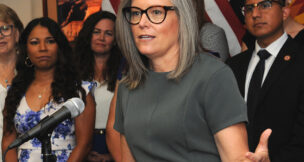Nearly $200 million from stimulus aims for greener Arizona
Arizona Capitol Reports Staff//March 26, 2009//[read_meter]
Nearly $200 million from stimulus aims for greener Arizona
Arizona Capitol Reports Staff//March 26, 2009//[read_meter]
Arizona looks to be on the road to a greener future, with nearly $200 million in federal stimulus money paving the way. The money aims to help the state, local...











